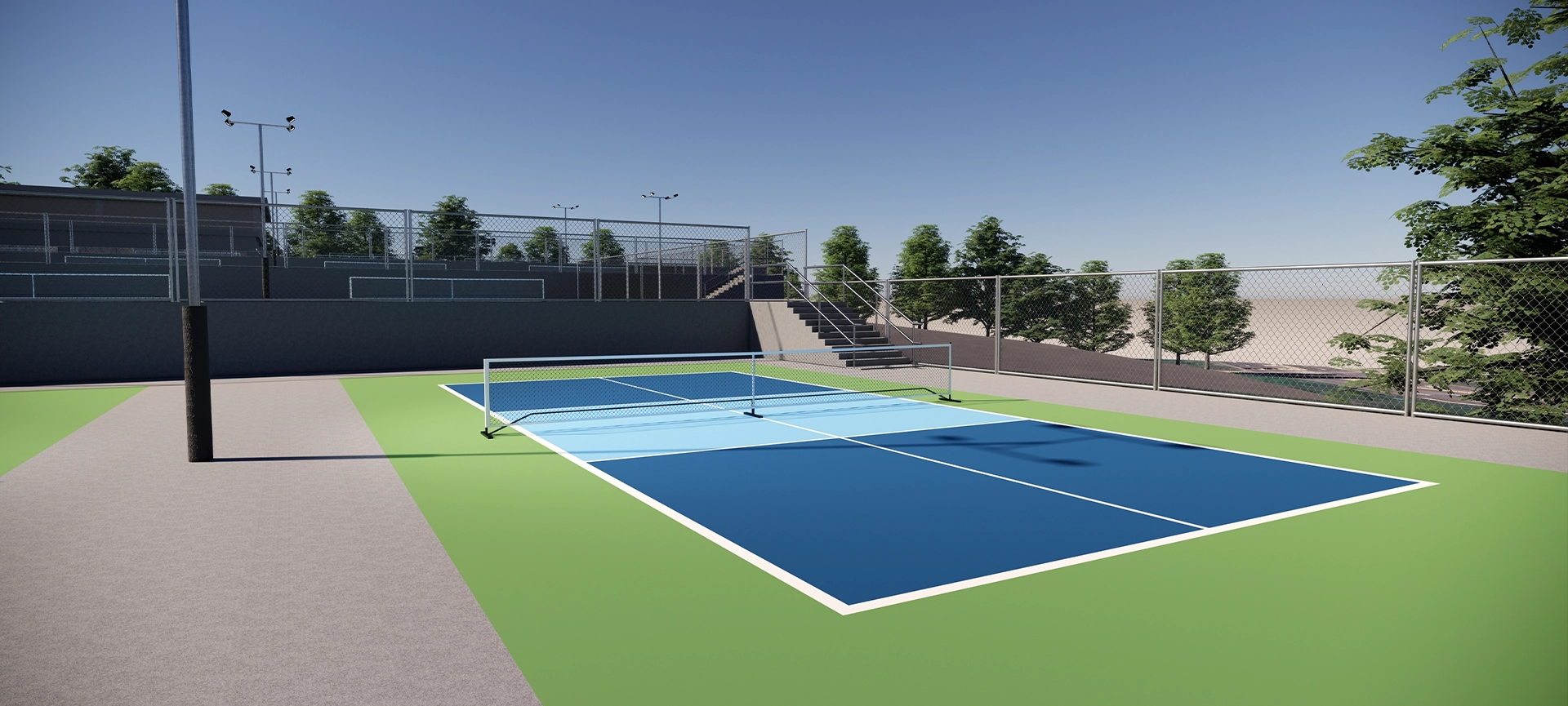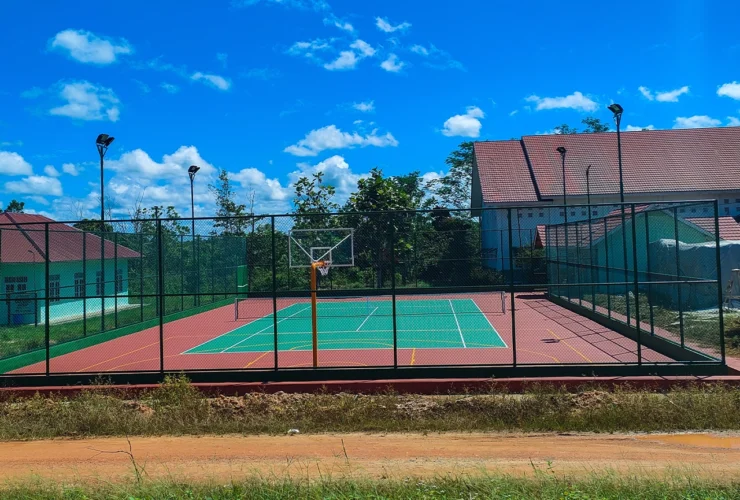Comparing Costs: Building an Outdoor Pickleball Court vs. Indoor
Community centres are adding courts, tournaments are popping up everywhere, and the distinctive pop of the pickleball paddle hitting the ball is becoming a familiar sound.
But as the pickleball craze grows, so does a common question: Should I build my court, and if so, should it be indoors or outdoors?
This blog post aims to explore the financial side of things associated with building both indoor and outdoor pickleball courts.
Continue reading to find the ideal court solution for your unique needs and preferences.
Outdoor Pickleball Courts: Sun, Fun, and Potential Savings
Regarding initial costs, outdoor pickleball courts often have the edge. The open-air and sunshine come with a potentially lower price tag, though it’s important to consider all the factors contributing to the total expense.
Upfront Cost Breakdown
1.Land Preparation Before laying down the court, you must get the ground ready. This involves clearing the area of vegetation, debris, and rocks. Levelling the ground is crucial for proper drainage and consistent play. In some cases, excavation might be necessary to create a flat surface.Depending on your land’s condition and the work complexity, these steps can vary significantly in cost.
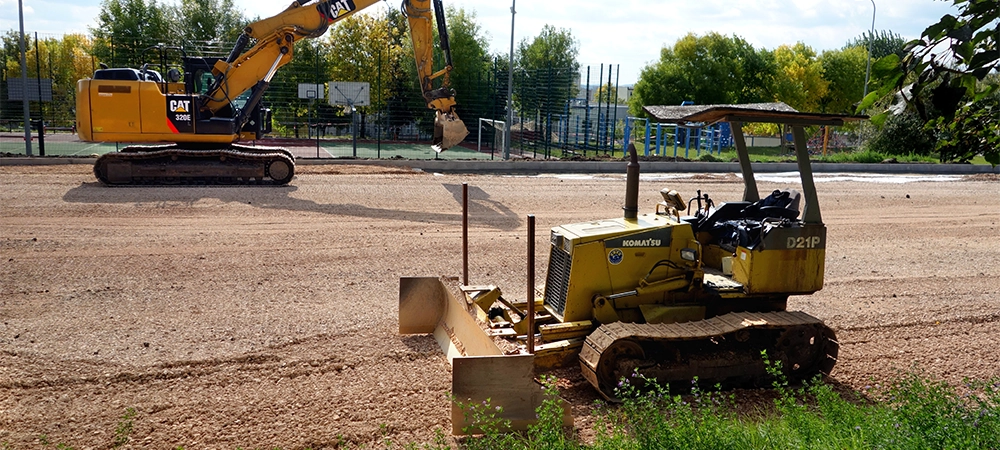
2. Surface Materials The playing surface is a major expense. Asphalt is often the most budget-friendly option, while concrete offers greater durability and longevity.Specialized pickleball court tiles or surfaces designed for sports use can also be considered, but they tend to be more expensive upfront.
3. Fencing A sturdy fence is essential to keep the ball in play and define the court boundaries. Chain-link fencing is a common and economical choice, but you can also opt for more aesthetically pleasing options like vinyl or wood, which are typically more expensive.
4. Net System This includes the posts, net, and potentially a centre strap to keep the net taut. Net systems vary in price based on materials and quality, but they’re generally a relatively smaller expense than the other elements of the court.
5. Optional Features
- Lighting: Court lighting is necessary if you want to play after sunset. Prices can vary significantly depending on the type of lighting (LED, halogen, etc.) and the number of fixtures required.
- Windscreen: A windscreen around the court’s perimeter can help reduce wind interference and provide privacy.
- Seating: Benches, chairs, or bleachers offer a place for players and spectators to rest and watch the action.
- Shade: In sunny Canadian summers, shade structures like canopies or awnings can make playing more comfortable.
The beauty of outdoor courts is the flexibility they offer. You can start with the basics and gradually add features over time as your budget allows.
Related Article: Choosing the Right Sports Surface for Your Community Center in Markham
Cost Considerations
A standard pickleball court is 20′ x 44′, but you can opt for a larger court if space allows. A larger court will naturally increase costs, from surface materials to fencing.
As mentioned, asphalt is typically the most affordable option, followed by concrete. Specialized pickleball surfaces are often more expensive but can offer enhanced playability and longevity.
The cost of optional features like lighting, windscreens, seating, and shade structures can add up quickly. Prioritize the most important features to you, and be prepared to invest more if you want a fully equipped court.
Long-Term Maintenance Costs
- Resurfacing/Repairs
- Cleaning
- Seasonal upkeep
Asphalt and concrete surfaces may require occasional resurfacing or repairs due to cracking, fading, or other damage. The frequency and cost of these repairs will depend on the quality of the initial installation and the climate.
Outdoor courts need regular cleaning to remove debris, leaves, and dirt that can accumulate. You can do this yourself or hire a professional cleaning service
In Canada, seasonal maintenance is essential. This might include snow removal in the winter and debris cleanup in the fall.
Pros of Outdoor Courts
- Natural light and fresh air
- Larger playing area
- Potential for landscaping and integration with surroundings
While outdoor pickleball courts might have a lower upfront cost, it’s important to factor in the long-term maintenance expenses and how the weather might impact play.
Indoor Pickleball Courts: Climate-Controlled Comfort and Year-Round Play
Indoor courts offer a tempting solution for those who don’t want their pickleball passion to hibernate during the colder months. They provide a consistent, comfortable playing environment no matter the weather. But this comes at a different cost.
Upfront Cost Breakdown
Building or Repurposing a Structure – If you don’t have a space suitable for pickleball, constructing a new building is the most expensive option. Alternatively, you can repurpose an existing warehouse, gymnasium, or large indoor space, significantly lowering the initial cost.
Specialized Indoor Flooring – Indoor pickleball courts require a specific type of flooring designed for sports use. These surfaces offer the right balance of grip and slide, ensuring safe and enjoyable play. Expect to pay more for this specialized flooring than for outdoor court surfaces.
Lighting – Adequate lighting is crucial for indoor play. LED lights are popular for their energy efficiency and bright, even illumination.
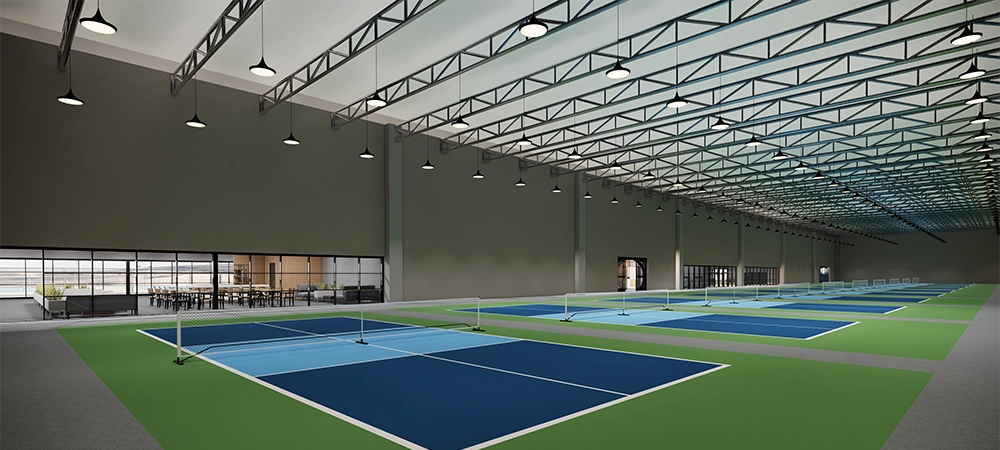
Ventilation/HVAC System – A well-designed ventilation system is essential to maintain air quality and regulate temperature inside the facility. In Canada, a heating system is also necessary to keep the court comfortable during winter.
Net System – Like outdoor courts, you’ll need a net system with posts and a net.
Optional Features
- Seating
- Viewing areas
- Soundproofing
Cost Considerations
Size of the Facility – The larger the indoor facility, the higher the flooring, lighting, HVAC, and potentially soundproofing costs.
Existing Infrastructure (Renovations vs. New Construction) – Repurposing an existing structure is generally more cost-effective than building a new one. However, renovations can still be expensive, depending on the extent of the work required.
Energy Efficiency of Lighting and HVAC – Investing in energy-efficient lighting and HVAC systems can significantly reduce ongoing energy costs.
Ongoing Costs
Energy Bills – Indoor courts have higher ongoing costs due to the need for lighting and climate control (heating and cooling). Energy-efficient lighting and HVAC systems can help mitigate these expenses.
Regular Maintenance and Cleaning – Indoor flooring requires regular cleaning and maintenance to ensure longevity and optimal playing conditions.
Pros of Indoor Courts
Protection from Weather – Rain, snow, and extreme temperatures won’t stop your pickleball games.
Consistent Playing Conditions – Enjoy the same level of playability year-round.
Potential for Multi-Use Space – The indoor facility can be used for other sports or activities, maximizing its value.
Related Article: How Much Does It Cost to Build a Pickleball Court?
Key Factors to Consider Beyond Cost
Cost is a major factor, but it’s not the only consideration when deciding between an indoor or outdoor pickleball court. Several other factors can significantly impact your choice:
Climate
An indoor court might be more appealing for year-round play if you live in a region with harsh winters and heavy snowfall. Outdoor courts can be difficult to maintain and use during the winter months.
Even in warmer seasons, frequent rain can disrupt outdoor pickleball games. An indoor court ensures you can play regardless of precipitation.
Availability of Space
Outdoor courts require ample space, while indoor courts might be a better option for smaller properties.
Check with your local municipality to see if zoning restrictions or regulations affect your ability to build a court.
Intended Use
If the court is primarily for personal use, you can prioritize features and amenities catering to your preferences.
A court intended for community use might need to be more versatile, accommodating players of varying skill levels and potentially hosting tournaments or leagues.
Commercial courts need to be designed with revenue generation in mind. Consider accessibility, parking, and amenities to attract players and generate income.
Player Preferences
Some players prefer the feel of playing outdoors in natural light, while others might enjoy the consistent conditions and climate control of an indoor court.
Consider factors like noise levels, privacy, and accessibility for players with disabilities.
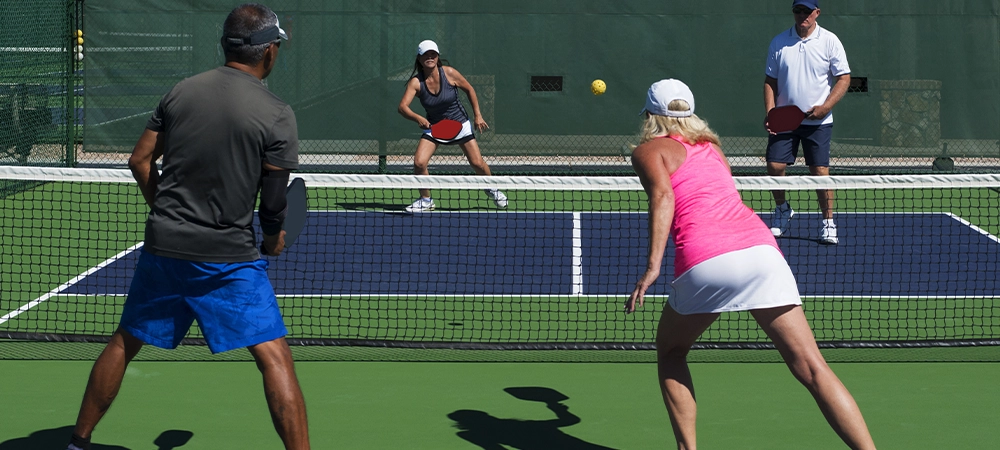
Your Partner in Building the Perfect Pickleball Court
Whether you’re leaning towards an outdoor oasis or an indoor haven for pickleball, Crowall is your trusted partner in pickleball court installation.
Our commitment to precision and craftsmanship is evident in every court we build. Crowall’s laser-graded sports surfaces are designed to elevate play for everyone, from community athletes to backyard enthusiasts.
If you need help determining which type of court is right for you or your organization and the costs involved, we can guide you in achieving good decision-making. We’ll start from site assessment and design to construction and maintenance.
Let us help you create the perfect court to fuel your pickleball passion. Contact us for a free quote today and take the first step towards your dream court.

